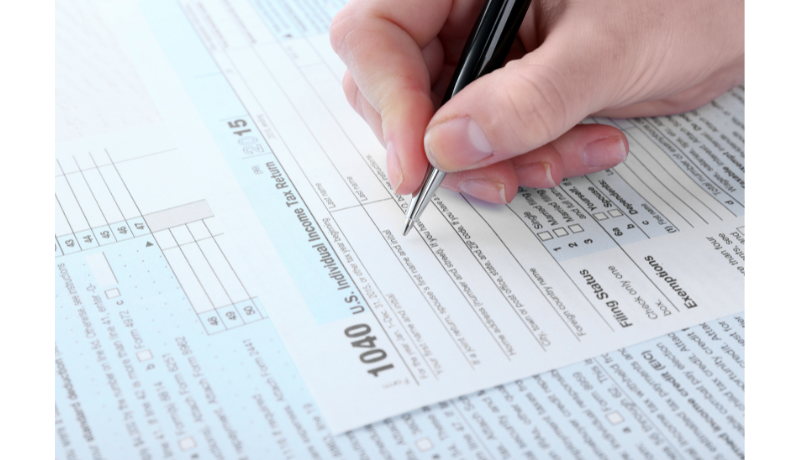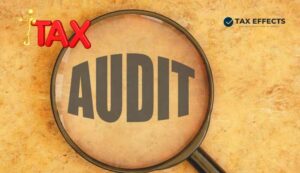Filing income tax returns is a crucial task for every taxpayer. However, it is common to make mistakes or omission certain details while filing Return of Income.
In such cases, the income tax department may issue a notice of defective return under Section 139(9) of the Income Tax Act. This notice aims to rectify any errors or omission in the filed return.
In this article we will be understanding thoroughly about the Defective Return u/s 139(9) of Income Tax Act,1961.
1. What is Defective Return?
A defective return u/s 139(9) refers to an ITR filed that contain any mistakes, errors or inconsistencies. These mistakes, errors or inconsistencies could range from incomplete information to incorrect calculations or failure to disclose certain income sources. When the income tax department identifies such discrepancies in a filed return, they issue a notice of defective return u/s 139(9).
2. Reasons, when defective return notice u/s 139(9) is issued?
The defective return notice highlights the specific defects or discrepancies found in the filed return. The defects could include incomplete ITR return filed without considering all heads of income, missing tax information, mismatch between TDS and income, non-compliance with tax audits & more. It is crucial to carefully review the notice & understand the exact nature of the defects mentioned.
3. How to Respond Against 139(9) Notice?
For submitting response to notice issued under Section 139(9), assessee need to do the following step:
Step 1- Open the Income Tax Portal & login to your account with user ID & password.
Step 2- Click on pending actions on the dashboard & then on e-proceedings.
Step 3- If there is any proceeding, you will see it in your pending actions.’ Click on view Notices.
Step 4- Click on ‘Notice/ Letter pdf’ to view the notice.
Step 5- Now, Download Relevant Documents (i.e. AIS/TIS/26 AS/JSON) Related to Previous Return you filed (i.e. Defective Return).
Step 6- After Downloading Relevant Document Download Offline Excel Utility from Income Tax Portal.
Step 7- Rectify all the Relevant error of Defective Return.
Step 8- After That click on Calculate Tax and Generate JSON.
Step 9- Now, you have to select the agree-on option and, submit the JSON that you downloaded from Offline Excel Utility.
4. Time limit to Respond against 139(9) Notice –
Time Limit for reply to make the necessary corrections in the return is within 15 days of receiving the notice u/s 139(9). If assessee fail to correct the mistake or error in ITR filed within time limit, then it may be deemed as that assessee has NOT filed the ITR for the required assessment year.
5. What if, Defective Return is not Corrected/Responded?
If assessee fail to respond to the defective notice within stipulated time period of 15 days, then the ITR return filed by the assessee may be treated as INVALID & consequences such as penalty, interest, NO carry forward of losses, loss of specific exemptions may arise to the assessee, as the case may be in accordance with the Income Tax Act.
Some Other Important Points:
-
How and where the Notice u/s 139(9) is Received?
The income tax department sends the defective return notice to the taxpayer’s registered email address. The subject line of the email typically reads “Communication u/s 139(9) for PAN [Assessee PAN Number] for the Assessment Year [A.Y.].” It is essential to regularly check your email & ensure that the email address registered with the income tax department is up to date.
-
What is the password for opening the 139(9) Notice?
The notice is attached to the email & is password protected. The password to open the notice is PAN in lower case & date of birth in the format DD/MM/YYYY.
-
Can I file New Return after Issuing Notice u/s 139(9)?
Yes, you can either file the return as a New ITR or Revised ITR return in case the time provided for filing the return in a particular assessment year has not lapsed or alternatively assessee can also choose to respond to notice u/s 139(9).
However, once the time provided for filing the return for a particular assessment year has lapsed, assessee will not be able file a New ITR or Revised ITR return & he/she will have the only option to respond to notice u/s 139(9). If he/she are unable to respond to the notice, the return will be treated as invalid or not filed for that assessment year. -
What are some of the common errors that make a return Defective?
Some of the common errors that make a return defective are as follows:
– Credit for TDS has been claimed but the corresponding receipts/income has been omitted to be offered for taxation
– The gross receipts shown in Form 26AS, on which credit for TDS has been claimed, are higher than the total of the receipts shown under all heads of income, in the return of income.
– “Gross Total Income” and all the heads of income is entered as “Nil or Zero” but tax liability has been computed and paid.
– Taxpayer having income under the head “Profits and gains of Business or Profession” but has not filled Balance Sheet and Profit and Loss Account.
Example of Defective Return –
Mr. X, a salaried individual, filed his ITR return for FY 2023-2024. However, he later received a notice stating his ITR was defective as he had forgotten to include income from his FD account, which the bank had reported to the tax department. To rectify the error, he reviewed the notice, prepared a revised ITR form including the interest income & recalculated his tax liability. He then resubmitted the corrected ITR within the specified timeline & paid any additional tax arises, if any. Finally upon successful submission, he received an acknowledgment from the tax department. By rectifying the defective ITR promptly, he ensured compliance with tax regulations & avoided any potential penalties.
Happy Readings!
Disclaimer: The information contained in this website is provided for informational purposes only, and should not be construed as legal/official advice on any matter. All the instructions, references, content, or documents are for educational purposes only and do not constitute legal advice. We do not accept any liabilities whatsoever for any losses caused directly or indirectly by the use/reliance of any information contained in this article or for any conclusion of the information.









